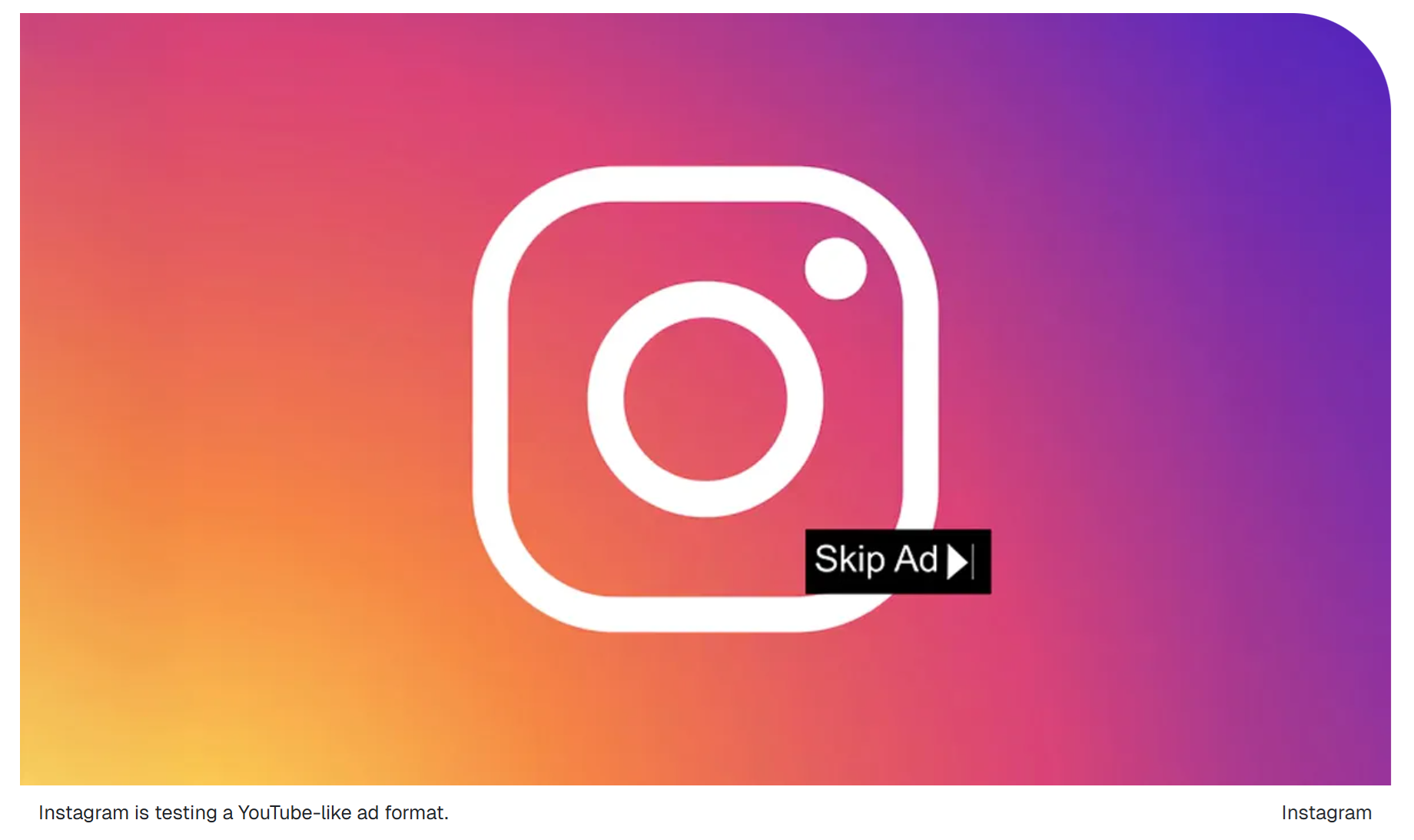Meta’s Instagram Reels Skippable Ads: The Quiet Revolution

In October 2025, Adweek confirmed Meta began testing Instagram Reels skippable ads, mirroring YouTube’s in-stream ad format. Users can now skip ads after a few seconds and jump back to their video feed.
At first glance, it might look like a simple UX experiment. But beneath it lies a major shift in how attention, intent, and creative performance could be measured across social platforms.
The Test and Its Context
According to Adweek reporter Trishla Ostwal, Meta is running a limited test to understand whether this format helps users discover businesses more effectively.
Unlike YouTube, Meta is not sharing revenue with creators during the pilot phase.
The timing is deliberate.
Gartner’s 2025 CMO Spend Survey shows marketers allocating 30.6% of total budgets to paid media, a 10% year-over-year increase. Social channels are now the second-largest digital spend category. And among them, Instagram has a higher purchase intent than both Facebook and YouTube.
For Meta, the equation is simple: if users tolerate skippable ads without hurting engagement, Reels could become a more efficient revenue engine.
(Source: Adweek, “Meta Is Testing Skippable Ads on Instagram Reels, Borrowing From YouTube’s Playbook,” Oct 17, 2025)
Why It Matters
Skippable ads change the game for both performance marketers and creative teams.
Historically, non-skippable ads were priced at a premium because they guaranteed full viewership. But forced attention rarely equals real engagement. Skippable formats, on the other hand, turn the moment of attention into a user decision and a behavioral signal that can separate curiosity from disinterest.
When someone doesn’t skip, that’s intent data.
When they do, it’s still valuable just different. It tells the algorithm what not to show, and it tells you which creative failed to earn a second chance.
What Growth Marketers Should Do Now
1. Treat skips as data, not failure
Every skip is a signal. Over time, Meta’s delivery models will likely use skip behavior to refine audience targeting. Track skip rates, watch-through rates, and conversions together to uncover patterns that explain quality, not just reach.
2. Redesign creative for “voluntary attention”
The first five seconds of a Reels ad now matter more than ever. Borrow the YouTube hook architecture: open with story, motion, or emotion versus a logo. Reward attention early, and you’ll earn more of it later.
3. Build sequential storytelling
Skippable formats open the door for creative sequencing:
- Those who skip can be retargeted with shorter, sharper hooks.
- Those who watch can be served longer or higher-intent creative, like testimonials or offers.
It’s a subtle shift from one-shot persuasion to multi-step storytelling.
4. Expect pricing and auction evolution
Meta could eventually roll out cost-per-view (CPV) or hybrid pricing models. Prepare by modeling CPV vs CPM efficiency and by aligning ROI measurement around view-through conversions.
What to Watch For
| Area | Shift or Risk | Why It Matters |
|---|---|---|
| Measurement Noise | Skip data may complicate attribution and inflate signal-to-noise ratio. | Algorithms will need time to interpret skips as quality indicators rather than negatives. |
| Creative Strategy | May usher in a new short-form storytelling discipline. | Teams will need to master earned attention rather than relying on forced impressions. |
| Auction Dynamics | CPMs could temporarily rise as the system learns. | Early adopters should isolate budgets to prevent blended CPM distortion. |
| Attribution Clarity | View-based engagement may dilute click-based signals. | Marketers must redefine how success is measured beyond CTR. |
| Creator Ecosystem | No revenue share yet for creators. | This could limit long-term adoption unless Meta adjusts monetization models. |
Staying Ahead of Platform Changes
The speed at which ad platforms evolve means marketers can’t wait for quarterly updates. Teams should build a lightweight “Ad Product Watchlist” to stay current.
Here’s a simple playbook:
- AI Alerts: Use Feedly, Perplexity, or Google Alerts for “Meta test,” “Reels ad format,” and “auction update.”
- Weekly Syncs: Align creative and media teams to share what’s changing and test hypotheses early.
- Rapid Test Protocol: Treat every new ad format like a product feature — run 14-day experiments, report learnings, and scale what works.
- Partner Engagement: Encourage Meta Partner Managers to include you in closed betas. Early learnings compound over time.
The Takeaway
Skippable Reels ads are not just a UX tweak they’re Meta’s signal that attention is moving from captive to voluntary.
The best growth marketers will recognize this for what it is:
A chance to design for curiosity, not captivity.
To read attention like a behavioral dataset, not a vanity metric.
And to build creative that doesn’t demand attention but earns it.
